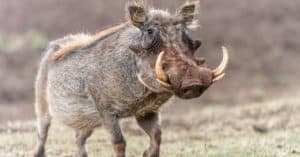Modern elephants and woolly mammoths have similar origins.
About 6 million years African elephants became a distinct species. Then about 440,000 years later, woolly mammoths and Asian elephants became separate species. The separate speciation events were similar to how gorillas, humans, and chimpanzees split up.
Today all of the woolly mammoths are extinct. But we can still see some of their characteristics in modern-day elephants.
What similarities and differences do they share? Let’s find out! Read on to learn all about the woolly mammoth vs elephant.
Comparing Woolly Mammoth vs Elephant
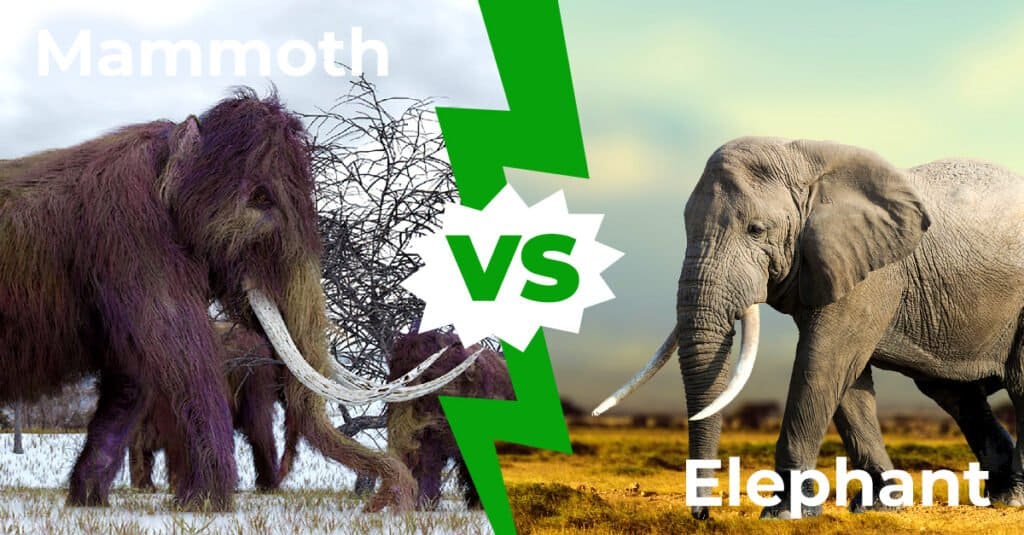
| Woolly Mammoth | Elephant | |
|---|---|---|
| Appearance | Height: 13 feet Weight: 6 tons 2 layers of fur Shaggy outer fur layer Small ears | Height: 13 feet Weight: 3-6 tons Thin hairs Barely noticeable hairs Large floppy ears |
| History | Descendants of Siberian Mammoth Belong to the group: Proboscideans | Descendants of Eritherium Belong to the group: Proboscideans |
| Species | Only 1 woolly mammoth 3 mammoth species, including woolly mammoth, lived in the mainland of the United States during Iceage | 3 distinct species; African savanna, African forest, and Asian |
| Habitat | Freezing cold weather Looked for vegetation south of ice sheets | Tropical warm weather Forests, savannahs, grasslands |
Woolly Mammoth vs Elephant: Key Differences
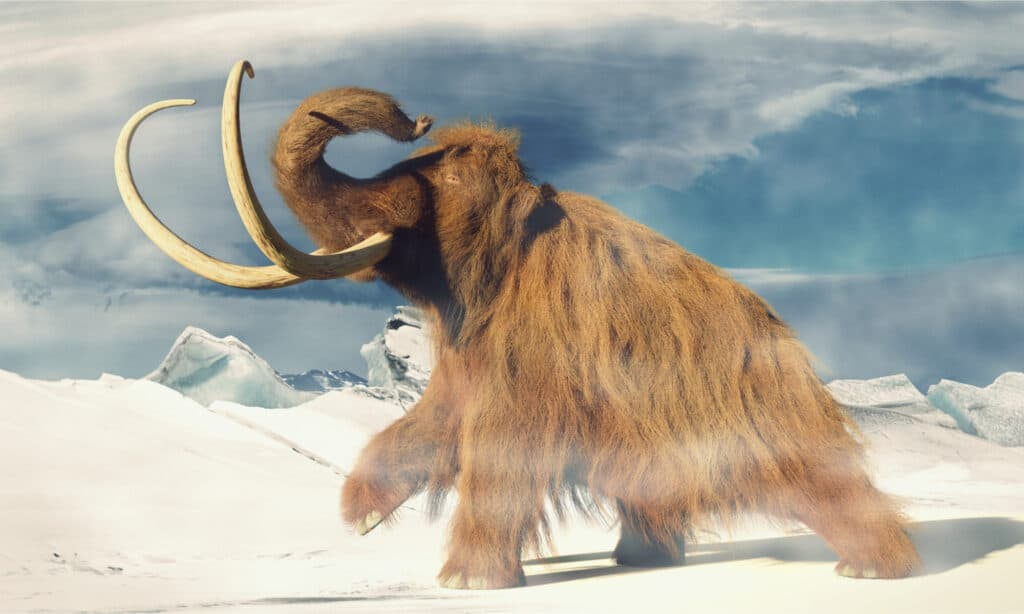
Woolly mammoths had two layers of fur.
©Dotted Yeti/Shutterstock.com
The key differences between a woolly mammoth vs elephant are their appearance, history, species, and habitat.
Woolly mammoths and elephants are related. However, they look very different and have unique histories. For starters, woolly mammoths had two layers of fur. The outer layer was extra fuzzy!
The last woolly mammoths went extinct back in 1650. Elephants are still found, roaming around in tropical climates. Since they don’t live in the same frigid temperatures as their mammoth relatives, elephants look very different. They have much shorter tusks, large floppy ears, and thin hair but no fur.
Why were their ears different sizes? It’s all about being built for survival. Woolly mammoths had tiny ears to help prevent frostbite. The small ears may have made it easy for them to maintain their core body temperature.
Amazingly, woolly mammoths weren’t much larger than elephants as we know them today. Elephants usually have a maximum weight of 6 tons–the same size as a fully grown woolly mammoth.
Woolly mammoth’s evolved from hundreds of years of interbreeding and genome adaptations. Their Siberian ancestors gave them the genes needed to survive cold temperatures. Alternatively, the elephants’ ancestry dates back to an ancient creature called Eritherium.
Both elephants and woolly mammoths belong to a group called proboscideans. Proboscideans include an order of afrotherian mammals. The order consists of extinct relatives of the elephant and modern-day elephants.
Keep reading as we break down all the key differences between a woolly mammoth vs elephant.
Woolly Mammoth vs Elephant: Appearance
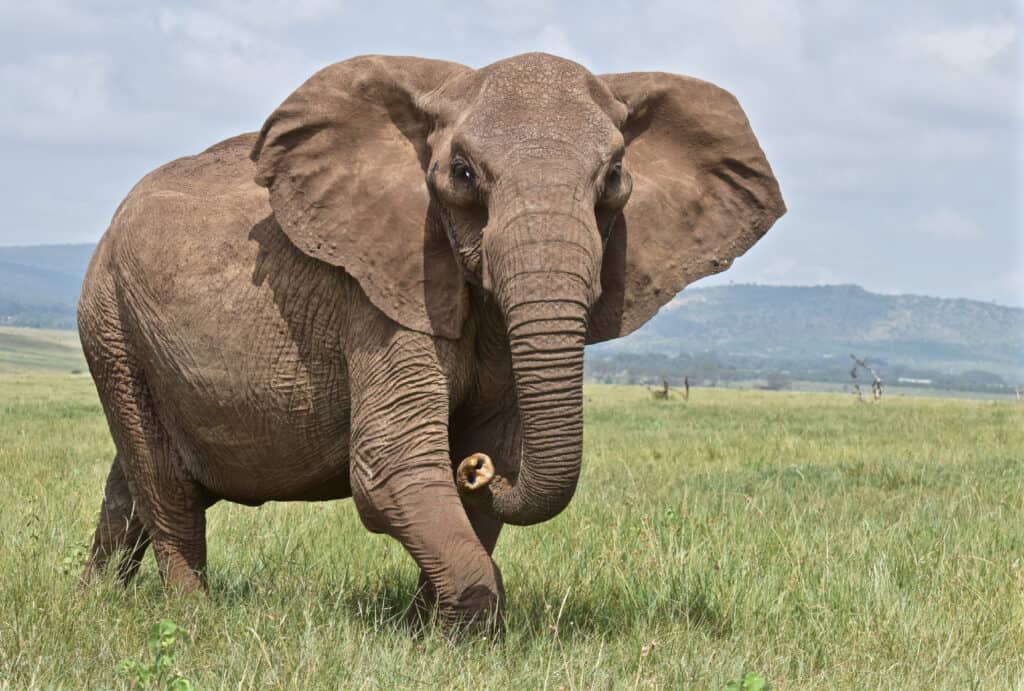
Elephants release heat through their large floppy ears.
©AndyElliott/Shutterstock.com
To stay warm, the woolly mammoth had two layers of fur. The outer layer was shaggy and could be as long as 20 in. They also had a distinguishable lump on their back. The lump probably worked like a camel hump, storing fat for when food sources were scarce. It may have also helped them maintain a healthy core body temperature.
Woolly mammoths were usually the size of an African elephant, maxing out at 13 ft in height. Their ears were smaller than elephant ears. The small size was an evolutionary survival tactic.
Large ears take too much energy to keep warm and let heat escape. Small ears are more efficient for mammoths to survive freezing temperatures.
One of the woolly mammoths’ most distinctive features is their enormous tusks. A mammoth’s tusks can quickly grow to over 15 ft in length!
Modern elephants have impressive tusks, but they’re not nearly as long. Elephant tusks today tend to be between 3-10 ft long, with around 6 ft being average.
Despite their name, woolly mammoths didn’t always have a mammoth size. They usually have sizes comparable to African elephants. The typical African elephant weighs around 2.5 to 7 tons. That means a sizeable African elephant would be the same size as a 6-ton woolly mammoth.
Woolly Mammoth vs Elephant: History
When did woolly mammoths run the tundra of North America, Asia, and Europe? They
were alive around 300,000 years ago. The majority of woolly mammoths went extinct around 10,000 years ago.
There’s evidence of a group of woolly mammoths surviving until 1650 BC. Well-preserved baby mammoth remains have helped uncover a lot about the extinct species.
Elephants are the largest land animals still alive today. Their genetic lineage goes back millions of years. The first modern elephants made their appearance around 7 million years ago. Living elephants share ancestry with aquatic animals known as sirenians, dugongs, and manatees.
Woolly Mammoth vs Elephant: Species
Going back over 1 million years, Siberian Steppe Mammoths are the woolly mammoths’ ancestors. The Siberian Mammoth had the genetic adaptations necessary for living in freezing temperatures. That’s how the woolly mammoth survived all those years later.
Around 100,000 years ago, North America was home to two types of mammoths. The Columbian mammoths were living as far south as Mexico. There were also woolly mammoths living in the north. Woolly mammoths and Colombian mammoths would interbreed.
Elephants have a more extended history. Eritherium is the most primitive elephant ancestor known to scientists. The ancient relative was much smaller than elephants as we know them today and closely resembled a tapir. It was alive during the Paleocene epoch in an area that’s now Morocco.
Eritherium is also a term to describe the genus of early proboscideans. Proboscideans are an order of afrotherian mammals that includes elephants and extinct relatives.
Woolly Mammoth vs Elephant: Habitat
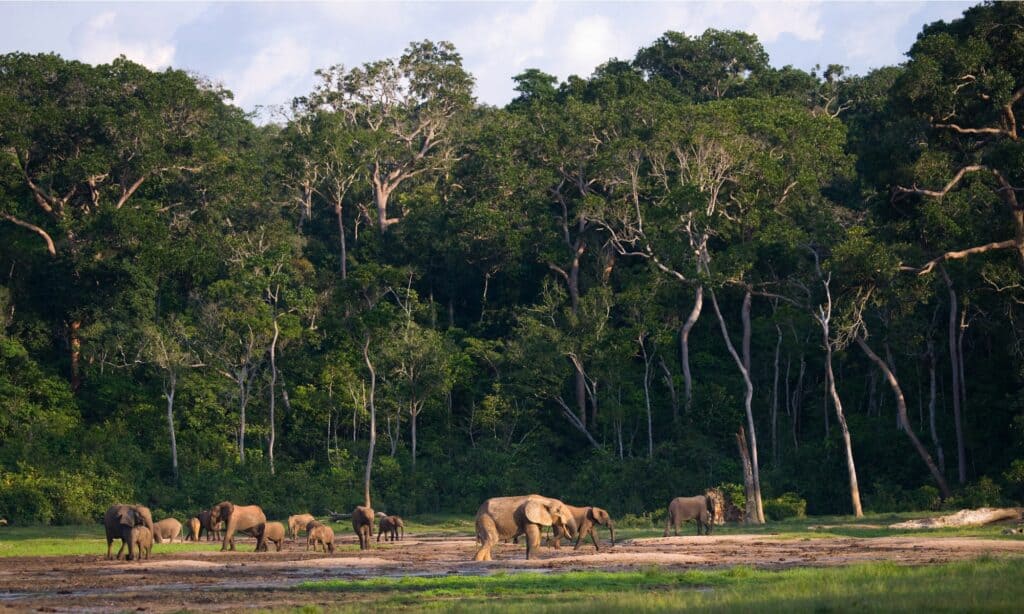
Forest elephants roam throughout Central
Africa
.
©iStock.com/ANDREYGUDKOV
During the ice ages, woolly mammoths lived in frigid environments. You could find woolly mammoths on the arid steppe tundra in the far north. A woolly mammoth’s habitat is called the “mammoth steppe” or “tundra steppe.”
Woolly mammoths could be found on the flat tundra and grasslands just south of ice sheets. Even though it was always chilly, their shaggy fur kept them warm.
Woolly mammoths were particularly fond of riverine environments, similar to elephants today. Elephants like water so much, that one woman was surprised when an enormous, curious elephant came to her pool! But pools aren’t their usual stomping grounds.
Instead, forests, grasslands, savannahs, highlands, and swamps are where elephants live. Savannah elephants can be found roaming the plains of Saharan Africa. Forest elephants thrive in the shaded forest of West and Central Africa. There’s even a smaller population of elephants that live in the desert of Mali.
The photo featured at the top of this post is © Mauricio Anton / Creative Commons / Original
Thank you for reading! Have some feedback for us? Contact the AZ Animals editorial team.




